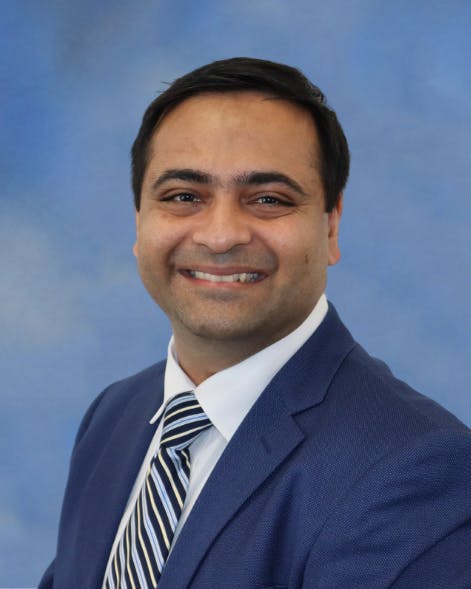A stroke can happen suddenly and without warning, often leaving little time to react. Among the different types, an ischemic stroke is by far the most common, caused by a blood clot that blocks blood flow to the brain. Because brain cells begin to die within seconds, knowing the signs and getting emergency care quickly can be lifesaving.
Note: If you or someone you know is experiencing stroke symptoms, please call 911 immediately.
What Is an Ischemic Stroke?
An ischemic stroke, also called an acute ischemic stroke, happens when a blood clot blocks or narrows an artery that supplies blood to the brain. When this happens, the brain is deprived of oxygen and nutrients, which can lead to permanent brain damage if treatment is not received quickly.
This type of stroke is different from a hemorrhagic stroke, which is caused by bleeding in the brain. About 87% of all strokes are ischemic, making it the most common form of stroke.
Ischemic Stroke vs. Hemorrhagic Stroke
It’s important to distinguish between these two main types of strokes because they require different treatments.
Ischemic Stroke:
- Caused by a blockage in a blood vessel.
- Often treated with clot-busting drugs or procedures to remove the clot.
Hemorrhagic Stroke:
- Caused by a burst blood vessel that leads to bleeding in the brain.
- Needs treatment to stop the bleeding and relieve pressure in the brain.
Types of Ischemic Stroke
There are three main types of ischemic strokes, each with different causes:
- Thrombotic stroke – A clot forms inside one of the arteries that supply blood to the brain, usually due to plaque buildup (atherosclerosis).
- Embolic stroke – A clot forms elsewhere in the body (often in the heart) and travels to the brain, where it blocks blood flow. Atrial fibrillation is a common risk factor.
- Transient Ischemic Attack (TIA) – Sometimes called a “mini-stroke,” this happens when a clot briefly blocks blood flow. Symptoms resolve within minutes or hours, but TIAs are a warning sign that a major stroke may follow if steps aren’t taken.
Symptoms of an Ischemic Stroke
Ischemic stroke symptoms appear suddenly and should always be treated as an emergency. Common signs include:
- Sudden weakness or numbness (especially one side of the body).
- Trouble speaking or understanding speech.
- Vision problems.
- Severe headache, dizziness, loss of balance.
A simple way to remember stroke symptoms is the BEFAST acronym:
- B - Balance: Do you have trouble walking suddenly?
- E - Eyes: Are you having vision changes acutely?
- F – Face: Does one side of the face droop?
- A – Arms: Is one arm weak or difficult to raise?
- S – Speech: Is speech slurred or hard to understand?
- T – Time: Call 911 right away.
For stroke symptoms in particular, urgency for treatment should be your top priority. The faster you get treatment, the better chance you have of saving brain tissue and optimizing recovery.
Ischemic Stroke Causes & Risk Factors
Common ischemic stroke causes include medical conditions such as high blood pressure, as well as lifestyle factors like smoking or inactivity.
- Atherosclerosis – Plaque buildup in the arteries.
- Blood clots – Especially from atrial fibrillation or heart conditions.
- High blood pressure – The single biggest risk factor.
- Diabetes, obesity, and high cholesterol – Metabolic conditions that strain blood vessels.
- Smoking – Damages arteries and increases clot risk.
- Family history – Genetics can also play a role.
Ischemic Stroke Treatment & Management
Treatment depends on how quickly a patient gets to the hospital. With that in mind, this is how an Ischemic Stroke is typically treated:
Emergency Stroke Treatment (Acute Care):
- tPA (alteplase, a tissue plasminogen activator) or TNK (Tenecteplase): A clot-busting drug that can restore blood flow if given within 4.5 hours of symptom onset.
- Mechanical thrombectomy: A minimally invasive procedure where doctors insert a catheter to physically remove large clots from the brain.
Ongoing Stroke Management:
- Medications: Blood thinners, cholesterol-lowering drugs, and blood pressure medicines help reduce the chance of future strokes.
- Lifestyle changes: Eating a heart-healthy diet, staying active, quitting smoking, and managing stress are essential.
- Rehabilitation: Physical, occupational, and speech therapy help patients regain independence and adjust to any lasting effects.
Is Ischemic Stroke Curable?
Unfortunately, there is no “cure” once brain damage has occurred, but recovery is possible. Many patients regain significant function with early treatment and rehabilitation. Preventing future strokes through medication, lifestyle changes, and regular follow-up care is a crucial part of long-term management.
Get Expert Stroke Care and Ongoing Support
At CLS Health, stroke patients benefit from a multidisciplinary team of specialists, including:
- Neurologists who diagnose and manage stroke care.
- Cardiologists who treat underlying heart conditions.
- Rehabilitation specialists who guide recovery and therapy.
We create personalized recovery plans that address both immediate treatment and future stroke prevention.
Stroke Care Services in Houston at CLS Health
There is no doubt that an ischemic stroke is a life-threatening medical emergency, but fast treatment and expert care can make recovery possible. If you or a loved one has experienced a stroke, our specialists at CLS Health are here to help with diagnosis, treatment, and rehabilitation.
Schedule an appointment with a stroke specialist today.

